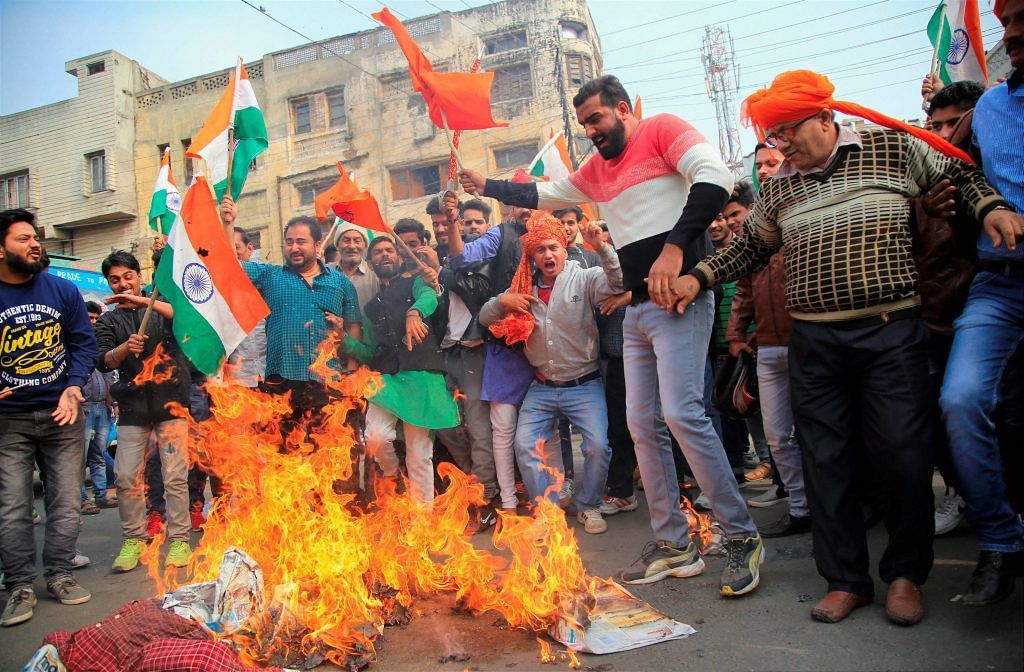Left-liberals first said Padmini wasn’t historical, but they’re the ones who emphasise ‘multiple histories’. It’s inconvenient this time, so they’re silent.
Fighting over history is one of the oldest ways of conducting politics around the world. The battle of ideas around Sanjay Leela Bhansali’s film Padmavati is not unique to India. In Europe, one can still find Holocaust deniers. Many in the Muslim world continue to believe that 9/11 was a Zionist conspiracy, and that Jewish executives in the towers had been advised to stay away.
Even before the arrival of Wikipedia and that creative storehouse of mob and pop mythologies called WhatsApp, there was tension between published, peer-reviewed history and oral histories. To assume any one version of history to be final or absolute is regressive. While the written word is great, what travels orally through generations can’t be tossed away either.
The Padmavati controversy is not just a battle over the past, but it is a serious disagreement over how we build, understand, and approach history as a discipline.
Padmavati poses a troubling intellectual challenge to the politics of historians and activists who have celebrated and insisted on the validity of multiple narratives in history to counter the ‘one nation-one past’ theme.
The problem comes from a somewhat restrictive understanding that regards history as a set of facts. But as a museologist and oral historian, I am trained to regard history as a set of interpretations as well. I approach the past as a combination of recorded and oral histories, even when these work at cross-purposes sometimes. An oral historian’s work is not just to arrive at definitive historical truths, but also to understand how the process of collective memory works.
I am trained to acknowledge and accept that there are many – different and divergent – versions of history, and oral narratives are as legit as academic historians who write ‘fixed history’ textbooks. The discipline of oral history looks at collective memory as non-elitist, one that is not written by the victor. In the classrooms, we have come to call them subaltern counter-narratives.
For instance, not too long ago, Left-liberals cheered the inclusion of A.K. Ramanujan’s ‘Three Hundred Ramayanas’ in the college curriculum, because they insisted that there are multiple retellings of the Ramayana. Some communities worship Ravana, and others even believe that Ram and Sita were siblings. Not everybody has to adhere to the Tulsidas, Valmiki, or Ramanand Sagar versions of the standardised Ramayana, we were told. They said that to insist there is only one version which everybody must believe is unfair and unsustainable.
Another example of privileging oral histories is this: in an Outlook magazine article in 2009, author Arundhati Roy began her argument against mining corporations in south Odisha by saying that the Dongria Kondh people regard the hills as a living deity. “Now these hills have been sold for the bauxite they contain. For the Kondh, it’s as though god has been sold,” she wrote, conveniently using tradition to boost her case.
But when it comes to Padmavati, that celebration of collective memory is problematic for the Left-liberals – because it glorifies the oppressive Sati practice and caste pride, and has now been co-opted by the Hindu Right.
Their first response was to insist that Padmini was not a real person. That she was a fictional character found in ‘Padmavat’, written by the 16th century poet Malik Muhammad Jayasi. They used Jayasi to undermine powerful oral histories that have survived for centuries.
The “Padmini was fiction” argument is untenable. There is no “one history” that is officially stamped, sealed, and approved by the state or the academia. In Padmini’s case, oral history has been a significant way of preserving cultural memory.
People in Rajasthan make an annual pilgrimage to the Jauhar kund to commemorate the now-illegal act of Sati performed by her in Samwat 1360 on Chaitra Ekadashi.
Travellers to Chittorgarh are often taken by the guides to the ‘exact’ spot from where her reflection was viewed in a mirror by Alauddin Khalji as she stood on the steps of her palace. It is the spot where millions of photographs have been clicked, as travellers pester the guides to tell the story of honour and sacrifice in every minute detail. It is a daily ritual of enacting history as theatre.
The controversy over the film poses an intellectual challenge to multiplicity advocates. The story of Padmini’s reflection and Sati is part of remembered history by a kingdom that lost the battle. It is classic stuff of oral histories. Why are the Left-liberals undermining it now?
During the nearly eight centuries of Muslim rule in India, a lot of Rajput history was preserved through oral retellings, included in the ballads. Not all of them had the luxury of Darbari chroniclers like the ruling Mughals did.
Having advocated the subaltern power of multiple narratives and oral histories for so long, the Left-liberals can no longer dismiss the communities’ belief about Padmini as not being factual now. Just like we can’t dismiss Jayasi’s epic as a work of pure fiction. Around that time, many works of history and fiction coalesced.
But Padmavati also hints at a larger problem of pluralist liberals in India today.
As they campaign against the homogenising impulse of the prevailing Hindutva politics by insisting on the plurality of identities and narratives, they have to let go of something else that they hold dear. They must shed what they interpret as the sole “idea of India”. Their idea of India has itself, in the past decade or so, become an inflexible, homogenising tyranny for many people. There isn’t just one idea of India. Liberals must re-map their political and intellectual strategies.
